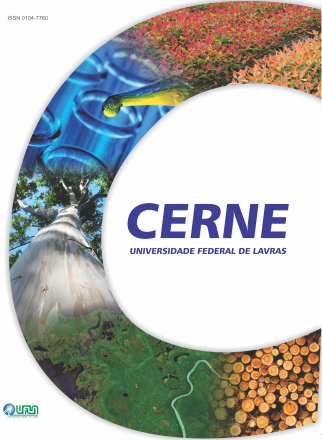FLORÍSTICA DE PLANTAS MEDICINAISNATIVAS E REMANESCENTES DE FLORESTA ESTACIONAL SEMIDECIDUAL NA REGIÃO DO ALTO RIO GRANDE - MINAS GERAIS
Cerne
FLORÍSTICA DE PLANTAS MEDICINAISNATIVAS E REMANESCENTES DE FLORESTA ESTACIONAL SEMIDECIDUAL NA REGIÃO DO ALTO RIO GRANDE - MINAS GERAIS
Autor Correspondente: Valéria Evangelista Gomes Rodrigues | [email protected]
Palavras-chave: medicina popular, plantas medicinais, florestas semideciduais, alto rio grande
Resumos Cadastrados
Resumo Português:
Levantou-se junto à s comunidades rurais, do sul do Estado de Minas Gerais, microrregião do Alto Rio Grande, municÃpios
de Lavras, Carrancas, IngaÃ, Itumirim e Itutinga, quais e para que fins as espécies nativas de florestas semideciduais são utilizadas na
medicina popular. Foi utilizado o método de questionamento proposto por Alencar & Gomes (1998) e a coleta e análise de informações
basearam-se no método de Triviños. Oito informantes trabalharam ao nÃvel de campo. Para cada espécie medicinal amostrada
anotaram-se o hábito e o grau de ocorrência. Foram levantados em 12 áreas de amostragens, 351 indivÃduos, pertencentes a 64 famÃlias,
112 gêneros e 142 espécies. As famÃlias que apresentaram o maior número de espécies medicinais nativas, foram: Fabaceae - 11;
Asteraceae - 10; Annonaceae, Bignoniaceae, Myrtaceae e Rubiaceae - 7; Solanaceae - 5; Aristolochiaceae, Lamiaceae e Malvaceae - 4;
Anacardiaceae, Dilleniaceae, Lauraceae, Meliaceae e Rutaceae - 3; essas contribuindo com 56,7% do total de espécies. Os gêneros que
apresentaram maior número de espécies medicinais nativas foram: Aristolochia e Eugenia - 4; Luehea, Mikania, Solanum, Vitex e
Xylopia - 3. Verificou-se a ocorrência de espécies raras nos fragmentos de floresta estudados, entre elas: Geissospermum laeve (Vell.)
Miers, Capsicodendron dinisii (Schwacke) Occhioni, Citronella gongonha (Mart.) R. A. Howard, Maytenus aquifolia Mart., Vitex
megapotamica (Spreng.) Moldenke, Virola sebifera Aubl., Eugenia pleurantha O. Berg, Baufourodendron riedelianum (Engl.) Engl.,
Solanum pseudoquina A. St.-Hil., e Styrax pohlii A. DC.
Resumo Inglês:
Information was gathered in rural communities of the south of the State of Minas Gerais, microregion of Alto Rio
Grande, municipalities of Lavas, Carrancas, IngaÃ, Itumirim and Itutinga, which ones, how and what for, the native semideciduous
forest species plants, in this kind of vegetation, are used for popular medicine. The inquiring method used was that proposed by
Alencar & Gomes (1998) and the survey and data analysis were based on Trivinos method. Eight informants participated in the field
work. For each medicinal species that was sampled, notes were taken on habit and the level of occurrence. In 12 sample areas, 351
individuals belonging to 64 families, 112 genres and 142 species, were surveyed. The families that presented the largest number of
native medicinal species, were: Fabaceae - 11; Asteraceae - 10; Annonaceae, Bignoniaceae, Myrtaceae e Rubiaceae - 7; Solanaceae - 5;
Aristolochiaceae, Lamiaceae, e Malvaceae - 4; Anacardiaceae, Dilleniaceae, Lauraceae, Meliaceae e Rutaceae - 3; these species
contributed with 56,7% of the total. The genres that presented the largest number of native medicinal species were: Aristolochia e
Eugenia - 4; Luehea, Mikania, Solanum, Vitex e Xylopia - 3. The occurrence of rare species in the studied forest fragments was also
verified, among which were:Geissospermumlaeve (Vell.)Miers., Capsicodendron dinisii (Schwacke)Occhioni, Citronella gongonha
(Mart.) R. A. Howard, Maytenus aquifolia Mart., Vitex megapotamica (Spreng.) Moldenke, Virola sebifera Aubl., Eugenia pleurantha
O. Berg, Baufourodendron riedelianum (Engl.) Engl., Solanum pseudoquina A. St.-Hil., e Styrax pohlii A. DC.

